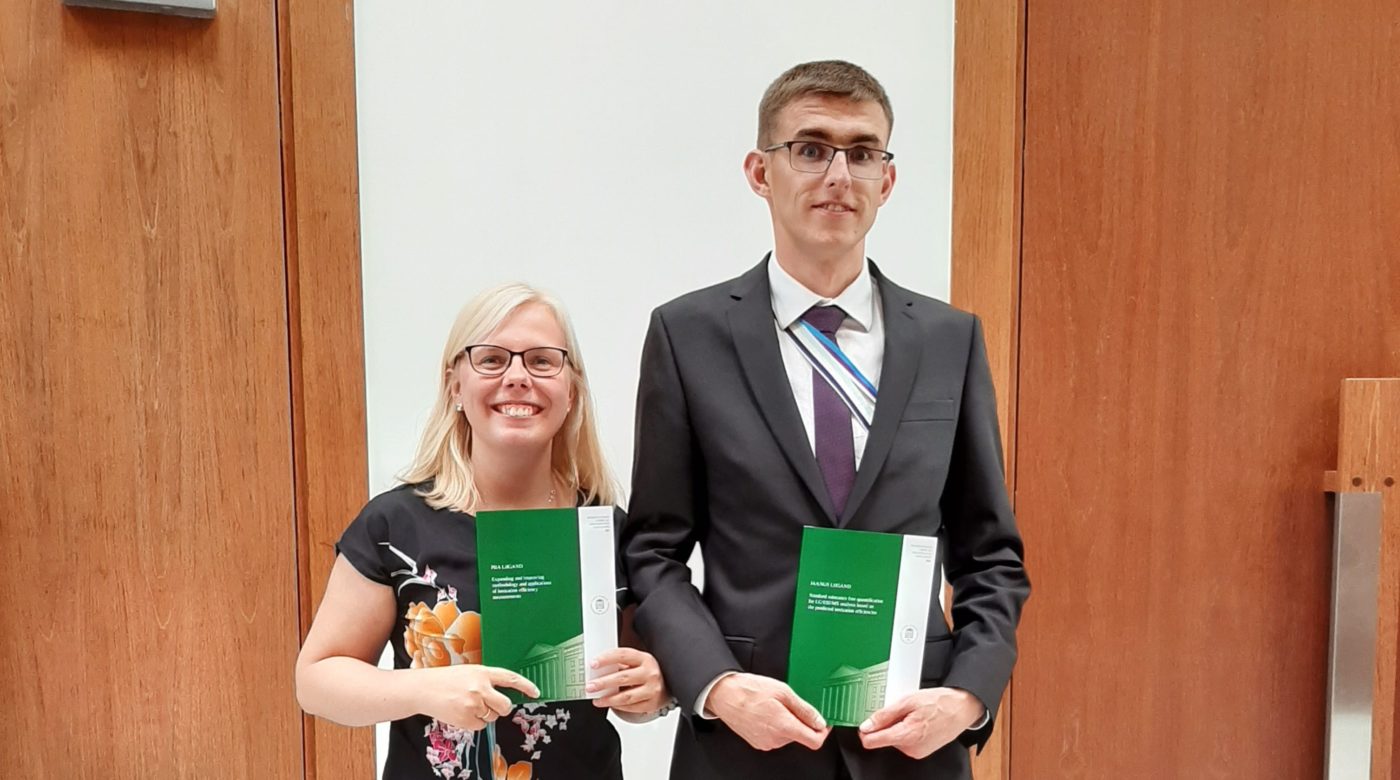Last week two of our PhD students, Piia Liigand and Jaanus Liigand, successfully defended their PhD theses. Both Piia and Jaanus worked intensively and successfully on understanding the ionization process in electrospray ionization source (ESI) and applying this knowledge for quantifying compounds with LC/ESI/MS without standard substances. Congratulations to the fresh doctors! Piia is continuing as a lab manager in TBD-Biodiscovery and Jaanus continues his scientific career at the University of Alberta in Prof. Wishart group.

On 15th of August, Piia Liigand defended her PhD thesis on “Expanding and improving methodology and applications of ionization efficiency measurements”. The opponent of Piia was Prof. Dr. Susan D. Richardson from the University of South Carolina. Over the last four years, Piia has contributed significantly into the development of ionization efficiency measurement methodology. She has been able to develop a method for measuring the ionization efficiencies for both small molecules as well as oligopeptides. Most of all, she has shown that the predicted ionization efficiencies can be applied for drug and drug-a-like measurements in the biological matrices. And, last but not least, she has pulled together a large number of response factors from the literature and shown that these values are in good agreement with each other in spite the, sometimes observed, contradicting conclusions.
Jaanus Liigand defended his PhD thesis on “Standard substance free quantification for LC/ESI/MS analysis based on the predicted ionization efficiencies”. Prof. Dr. Jonathan Martin acted as an opponent of the defense. During his PhD, Jaanus has worked hard on understanding the mechanism of electrospray ionization in LC/ESI/MS; primarily understanding how the structure of the compound and the eluent used in the analysis influence the ionization efficiency. Jaanus has verified, based on the largest set of ionization efficiencies measured so far (roughly 400 compounds), that the more hydrophobic compounds and more basic compounds tend to have a higher response in ESI positive mode. From the mobile phase point of view, both organic solvent content, pH of the buffer, and buffer composition, influence the ionization efficiency in ESI/MS. In general, higher organic solvent content and lower pH result in higher ionization efficiency and, therefore, a higher response in positive mode ESI/MS. Also, he investigated how well are the ionization efficiency values measured on one instrument transferable to other instruments and found that with the aid of 5-6 common compounds the ionization efficiency values can be transferred from one instrument to another. Combining these promising results and machine learning approaches Jaanus has been able to develop a truly universal approach for applying ionization efficiency predictions for quantification in suspect and non-targeted LC/ESI/HRMS analysis.


